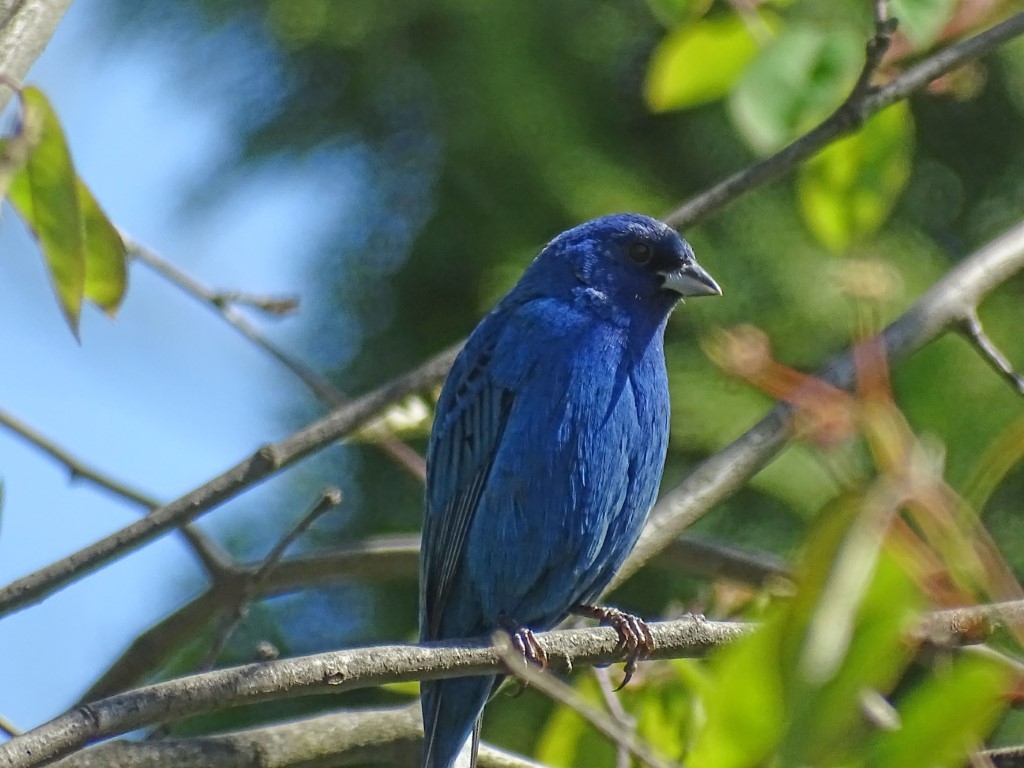During the spring migration season it’s always a thrill when an Indigo Bunting visits my yard. This spring two males stayed in our neighborhood for about a week before moving on to their nesting territories.

That vibrant-blue color can actually be easy to miss—especially if it’s a cloudy day or the bird is singing from an dark-green evergreen tree. But thankfully these birds sing often, so if you’re patient you can locate them.
I don’t do a lot of birdwatching in July. The weather is often very hot and humid, and it’s harder to find birds because once breeding season is winding down, the males no longer have a reason to sing.

But on the way back from a quick trip out of our city recently, I asked my husband if we could make a stop at the prairie parcel of a nearby conservancy. I wanted to see the wildflowers in full bloom, and I also wondered if any birds would be singing.

We stepped out of the car for only 5 minutes and walked only about 50 feet, but in that time I heard and saw at least 3 Indigo Buntings. They are known to sing from dawn ’til dusk. I also heard a Sedge Wren and a Common Yellowthroat, but they stayed hidden in the tall prairie grasses.
Indigo Buntings nest in most of the Central and Eastern United States. They prefer the edge of woods and fields, so if you live near a natural area or even a park, you might be able to spot one of these beautiful birds in the summer.
If you’re not familiar with their song, you can use the Merlin app to help you locate them.
Here’s a fun fact about Indigo Buntings from the Cornell Lab of Ornithology: “Indigo Buntings migrate at night, using the stars for guidance. Researchers demonstrated this process in the late 1960s by studying captive Indigo Buntings in a planetarium and then under the natural night sky. The birds possess an internal clock that enables them to continually adjust their angle of orientation to a star—even as that star moves through the night sky.”
